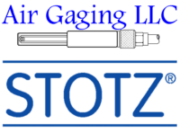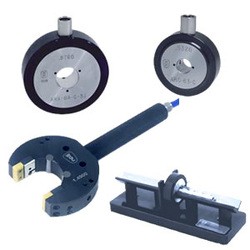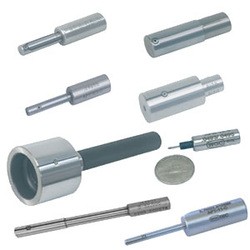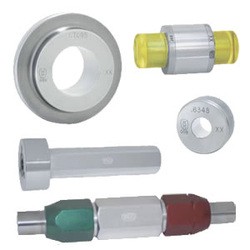What Are Air Gages?
Air gauging relies on a law of physics that states flow and pressure are directly proportionate to clearance and react inversely to each other. As clearance increases, air flow also increases, and air pressure decreases proportionately. As clearance decreases, air flow also decreases, and air pressure increases.
This is accomplished by having a regulated airflow that travels through some type of restriction, such as a needle valve or jeweled orifice, and then through the nozzle in the air tool. As the obstruction (i.e., workpiece) is brought closer to the nozzle, airflow is reduced and the back pressure is increased. When the nozzle is completely obstructed, the flow is zero, and the backpressure is equal to the regulated air. Conversely, when the nozzle is open to the atmosphere, airflow is at a maximum, and the backpressure is at a minimum.
Types of Air Gages
Air Rings
Air rings and C-Gages are used for checking external diameters.
Available in chrome or carbide.
Available to work with most readouts.
Air Probes
These are used for checking internal diameters and are sometimes called air plug gages or air spindles.
Available in steel, chrome or carbide.
Available to work with most readouts.
Master Rings
We offer a full line of master setting rings in X, XX, XXX in steel, chrome, and carbide for calibrating the Air Probes.
Master Plugs
We offer a full line of master plugs/discs in X, XX, XXX in steel, chrome, and carbide for calibrating the Air Rings.



